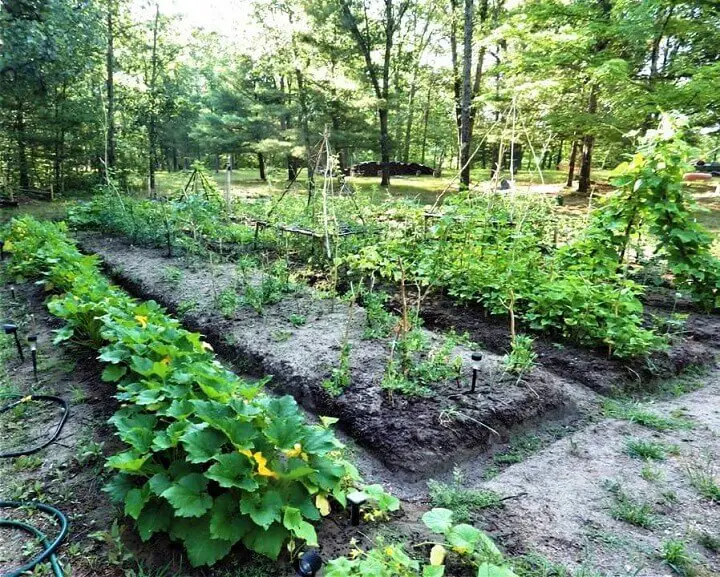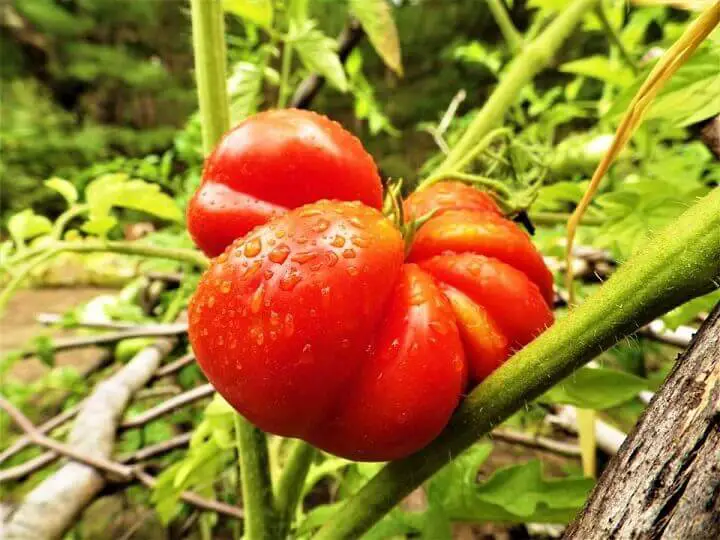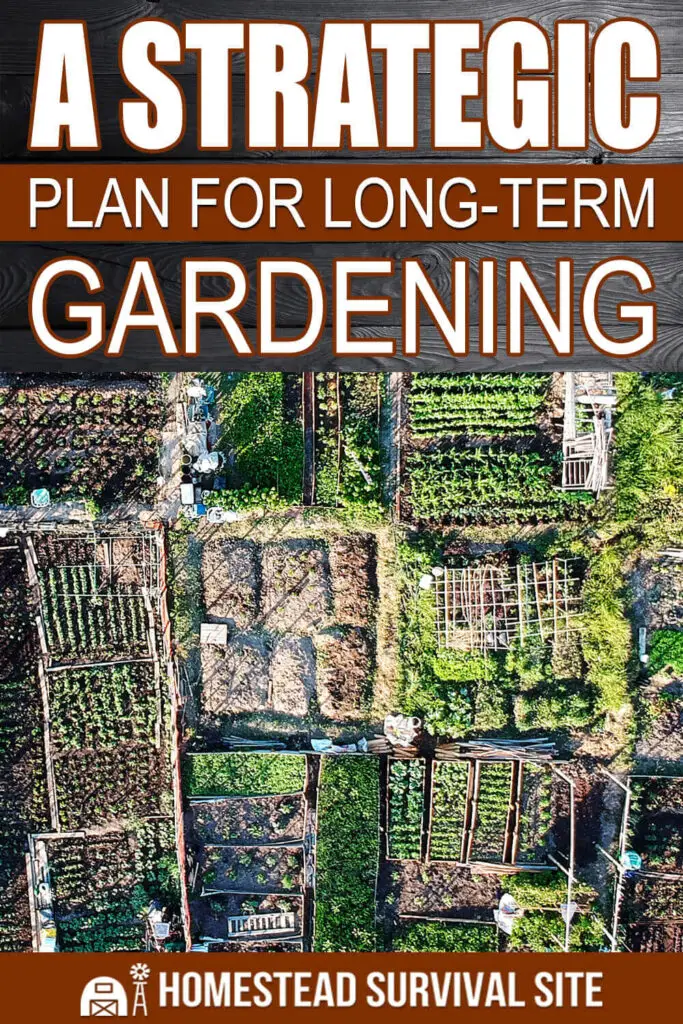Estimated reading time: 13 minutes
How Crop Rotation, Companion Planting and Succession Planting Can Make Every Season a Banner Crop.
Everyone who plants a vegetable garden hopes for the best and usually takes all of the necessary steps to have a successful garden. Some of these steps include composting, roto-tilling, regular watering, weeding, and routine control of bugs and fungus. All of those are excellent ideas but there are additional practices that can further guarantee success year after year.
Want to save this post for later? Click here to Pin It On Pinterest!
The Next Season Disappointments
Most of us plant our garden in the same plot year after year. That makes sense.

We’ve found the best location with a good amount of sun, easy access to a garden hose, and a place that’s out of the way and possibly fenced in.
But as many people have learned, a garden can begin to disappoint in following seasons with chronic problems from fungus, stunted growth, low yields and a growing insect population on plants that seem to be struggling more than thriving.
The Fundamental Problem

It’s the soil. That’s the cause of fundamental problems with plant health and yields year after year. The first crop from the first season in any garden is often the best. And then we start to struggle as we continue to plant season after season.
Adding additional compost always helps and there are always commercial plant foods and various sprays to manage insects and fungus but what we sometimes miss is that how, where and when we plant can often solve many problems with soil and both plant health and yields.
3 Planting Techniques to Consider

The 3 practices that farmers are well aware of include:
- Crop Rotation
- Companion Planting
- Succession Planting
You may or may not be familiar with these practices but they not only help to keep plants healthy but maintain good yields and even revitalize the soil.
1. Crop Rotation
The Heavy Feeders

All plants feed on nutrients in the soil to grow. Some plants are categorized as “heavy feeders.” These are plants that take a significant amount of nutrients from the soil especially nitrogen. Even the addition of compost may not keep up with the nitrogen nutrients lost. These vegetable plants include:
- Tomatoes
- Potatoes
- Squash and melons (all varieties)
- Corn
- Cucumbers
- Peppers
- Broccoli
- Celery
These are the plants that often look good with high yields the first season but then we sometimes wonder what happened the following year.

- Did we water too little or too much?
- Do we need to feed them with more fertilizer or not?
- Was our compost not sufficiently broken down?
- Did we buy a different variety of vegetable?
- Are bugs or fungus to blame?
All of the above are possibilities but what we sometime miss is that we tend to plant the same vegetables in the same location in the garden year after year. The first season planting of spaghetti squash resulted in yields beyond our expectations and we like the idea of going to the same spot in the garden to see it happen again the following year only to be disappointed. That’s where crop rotation comes into play.
The Nitrogen Fixers

The key to crop rotation can be defined in a word: “beans.” All bean varieties have an interesting characteristic. Their roots are a breeding ground for something called “nitrogen fixing bacteria.” The result is that a bean plant saturates the ground with more nitrogen than it takes.
It’s why farmers will plant a heavy feeder like corn one year, and then plant a nitrogen fixer like soy beans in the same location the following year. They’re rotating their crops and you can and should do it too.
Peas also have the same nitrogen fixing characteristic which also makes them ideal companions when determining what you will plant where and when.
Outfox Fungus
Another benefit of crop rotation is some degree of fungus management. Various varieties of fungus affect a range of plants but many fungi zero in on only certain plant species or plant families. What we sometimes miss is that the soil around a plant is the real culprit and it’s where the fungus survives and thrives continually infecting the plant over a season and next season as well.
Planting a different type of vegetable plant in a soil infected with a certain type of fungus might outfox the fungus. If it’s a tomato fungus and bush beans suddenly show up in the neighborhood it may be enough to stump the fungus.
No guarantees because some fungus varieties are indiscriminate but crop rotation can help along with the option of using organic fungus solutions like copper sulfate or commercially purchased fungus treatments.
The Telegram: Plot and plan your garden over at least two seasons to manage crop rotation.
2. Companion Planting

Some plants are incompatible and don’t get along when planted next to each other. Other plants are highly compatible and thrive and grow just fine when planted next to a good companion. The best combination are plants that are symbiotic with one or both actually benefitting from growing next to each other.
Incompatible Plant Combinations
Some plants are incompatible for a variety of reasons. Certain plants are toxic to each other when planted in close proximity. Others attract insects that will easily migrate to a similar plant. Worms that thrive on tomatoes will quickly migrate to corn and vice versa. Various fungus strains will quickly hop to some plants in close proximity. Take a close look at the chart we’ve developed and be mindful of planting some plants in close proximity.
Compatible Plant Combinations
Most vegetable plants get along just fine. They don’t compete for the sun or create too much shade or create just enough shade and don’t have adverse effects on neighboring plants.
Symbiotic Plant Combinations
Some plants thrive in the company of other plants. Tomatoes love onions. Rosemary repels Japanese beetles on beans. Mint and sage repel cabbage moths. And basil improves the flavor of tomatoes.
| Plant | Compatible Plants | Incompatible Plants | Plant Synergies |
|---|---|---|---|
| Beans | Beets, carrots, chard, cabbage, corn, cucumbers, peas, radishes | Garlic, onions | An herb like rosemary will repel Japanese beetles |
| Beets | Broccoli, Brussels sprouts, bush beans, cabbage, cauliflower, chard, kohlrabi, onions | Mustard greens, pole beans | |
| Broccoli | Basil, beets, bush beans, carrots, celery, cucumber, dill, garlic, lettuce, onions, radishes, rosemary, spinach, Swiss chard | Asparagus, cantaloupe, pole beans, mustard, peppers, pumpkins, strawberries, sweet corn, watermelon | Rosemary repels the cabbage fly which also feeds on broccoli |
| Cabbage | Beets, celery, chard, lettuce, spinach, onions, mint, sage | Kohlrabi, tomatoes | Mint and sage repel cabbage moths |
| Carrots | Beans, lettuce, onions, peas, peppers, tomatoes, chives, rosemary | Dill | Chives are reported to improve flavor and rosemary deters flies |
| Corn | Pole beans, cucumber, marjoram, peas, pumpkins, squash, sunflowers, zucchini | Tomatoes | Tomato worms and corn earworms will feed on either plant. |
| Onions | Cabbage, carrots, chard, lettuce, peppers, tomatoes | Beans and peas | Chamomile has been noted to improve growth and flavor |
| Potatoes | Basil, beans, celery, corn, garlic, horseradish, lettuce, onions, peas, radishes, spinach | Asparagus, broccoli, Brussels sprouts, cabbage, cauliflower, carrots, cucumbers, eggplant, kohlrabi, melons, peppers, raspberries, squash, strawberries, tomatoes | Tomatoes and cucumbers attract harmful insects. Horseradish increases disease resistance of the potato tuber |
| Pumpkin | Beans, corn, squash | Potatoes | |
| Radishes | Beets, cabbage, carrots, chives, cucumbers, kale, lettuce, spinach, squash | Radishes are compatible with any plant | |
| All Squash | Beans, corn, dill, peas, radishes, strawberries | potatoes | |
| Strawberries | Bush beans, chives, lettuce, onions, sage, spinach, squash | All members of the cabbage family and the nightshade family including eggplants, peppers, potatoes, tomatoes | |
| Tomatoes | Asparagus, carrots, celery, onions, parsley, peppers | Corn, dill, kohlrabi, potatoes | Basil and mint improve growth and flavor |
| Zucchini | Beans, corn, dill, garlic, peas, radishes, spinach | Potatoes and pumpkin and smaller plants that can be heavily shaded by the zucchini leaves |
The Telegram: Strive for symbiotic planting combinations whenever possible or at least make sure companion plants are compatible. Avoid incompatible combinations.
3. Succession Planting

Some vegetables reach maturity sooner than others. With some varieties it’s possible to have 2 or 3 or more harvests of the same crop in one season. A lot depends on where you live and the length of your growing season, but even in far northern latitudes there are plant varieties that can give you at least two harvests.
Here are some vegetables you might succession plant with their maturities to plan succession planting:
| Vegetable | Days to Maturity |
|---|---|
| Beets | 50 days |
| Broccoli | 60 to 80 days |
| Bush Beans | 45 to 60 days |
| Carrots | 60 to 100 days |
| Celery | 115 to 135 days |
| Cucumbers | 50 to 70 days |
| Green Onions | 25 to 30 days |
| Lettuce (leaf variety) | 30 days |
| Peas | 60 days |
| Pole Beans | 65 to 100 days |
| Potatoes | 60 to 90 days |
| Radishes | 25 to 30 days |
| Spinach | 30 to 45 days |
| Tomatoes | 100 to 120 days |
| Turnips | 60 days |
| Zucchini | 60 to 90 days |
Where Succession Planting Fails

Succession planting is a good idea but our instincts once again set us up for a bit of a fail. What we tend to do is harvest the radishes after about a month and then what do we do? Replant the next crop of radishes in the exact same location. This gets back to crop rotation. All vegetables take their share of nitrogen so be mindful and rotate the vegetable varieties when you succession plant.
Once again, you could always work in some compost (and you should) but you could also apply crop rotation. Harvest the radishes and plant some more bush beans. The nitrogen fixing bacteria will replenish the soil and bush beans mature in 45 to 60 days.
In fact, you should always rotate any vegetables that you succession plant. Harvest the peas and succession plant with a second crop of beets. You won’t always have the advantage of nitrogen fixing bacteria but planting something different with each successive planting will help to inhibit fungus in the ground and in the case of beans and even peas, return some nitrogen to the soil.
The Telegram: Plot and Plan what and where you will do succession planting over a season and from season to season, and try to avoid succession planting the same vegetable in the same spot.
Putting the Plan Together

This is as simple as drawing a layout of your garden and thinking about what goes where, when, and for what reason. In the above example, companion planting has guided plant location to make sure that compatible, incompatible and symbiotic plants are in the right place.

It also involves doing additional layouts for succession planting within a season. In this layout we’ve succession planted vegetables that are compatible with surrounding plants and in some instances, revitalize the soil with nitrogen.

As you harvest early maturing varieties, replant a new crop of a vegetable while keeping in mind companion planting and time to maturity. Remember crop rotation as well to keep the soil enriched using beans and peas as the primary nitrogen enhancer.

Most people can succession plant 3 crops of certain vegetables depending on their maturation rates. If this is your last crop you’ll need to remember what was planted where so you can develop a good planting strategy for next year.

At the end of the growing season you should make a chart for next year’s planting. You may change your mind about things in the spring, but this is a good way to plan for crop rotation to replenish the soil with nitrogen fixing vegetables like beans and peas.
You can and should also keep a scorecard and notes on your layouts to grade your crops and the harvest so you can make additional decisions about the current season and for the following year.
Things to Keep Doing
Applying some of these practices will help but don’t abandon tried and true gardening concepts.
- Continue composting
- Water regularly and properly
- Feed with commercial feeds if you choose
- Manage insects and fungus
- Weed regularly (many garden weeds are also edible)
In the grand scheme of gardening; crop rotation, companion planting and succession planting are easy to do. What’s important is that you have a well thought out plan that applies all of the best practices to every garden you plant.
Like this post? Don't Forget to Pin It On Pinterest!













thak you so much.I appreciate It.